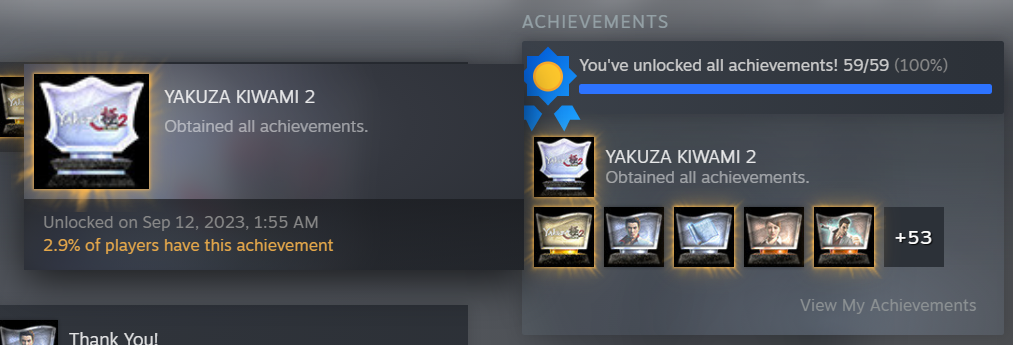This is a tutorial on how to play Japanese Mahjong. It took me sometime to learn the complicated rules so I am writing this simplified tutorial for the ones who want to save the time and effort to read through the long boring rule book. I am not a native speaker and I may not use the correct translation of certain stuff, but it will be enough for you to understand how to play Mahjong after reading. Do remember though Mahjong is a type of gambling so it still depends on your luck to win even if you learned how to play it, so be patient and always SAVE you game before starting a round.
What tiles do I have?
Before we start playing, we need to know what tiles are we playing with in Mahjong
The first type is Number tiles, shown in the pictures and each in the order of number from 1-9
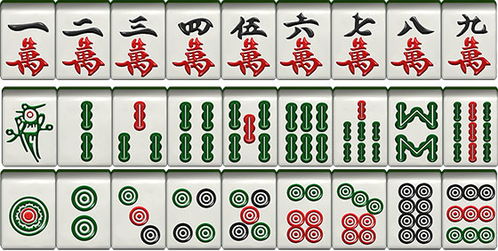
- The first row are the Character tiles, in which 萬 means “ten thousand”
- The second row are Bamboo tiles. The number 1 of Bamboo looks like this in the game

- The third row are Circle tiles
Aside from the number tiles, you also have Wind tiles and Dragon tiles
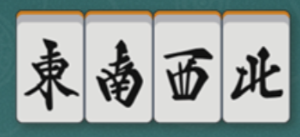
- The wind tiles are 東-East Wind, 西-West Wind, 南-South Wind, 北-North Wind
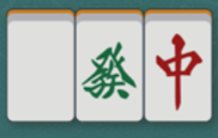
- The dragon tiles are blank-White, 發 (Fa)-Green, 中(Zhong)-Red
You will be making sets and pairs to win the game, 4 sets and 1 pairs in total.
- A set is three or four of the same tiles, or three consecutive tiles, such as 234, 333, or 4444
- A pair is two of the same tiles, such as 22 or 33.
You can also form set and pair with wind and dragon tile, the same wind of color of course.
How do I Win/Ron the game?
As explained earlier, to win the game, you will be making sets and pairs to win the game, 4 sets and 1 pair in total.
The basic game rule is similar to Poker, you draw a tile each round, and discard one you don’t want. In game its press E after selecting with your mouse or using A or D on keyboard.
After you formed 3 sets 1 pair, or 4 sets with 1 single tile, you will wait for the others to discard the tile you need, or to draw the tile by yourself.
If you win by taking a tile from others, it is called a 栄 (Ron). If you win by draw the tile yourself, it is called a 自摸 (Tsumo)
When you can win, the option of Ron or Tsumo will shown in game, and you can simply press E to perform it and win the round.
However, simply forming the sets and pairs is not enough to Ron. You need to form a Honor (役), which has five basic types, and you need to form at least one of them to be able to Ron.
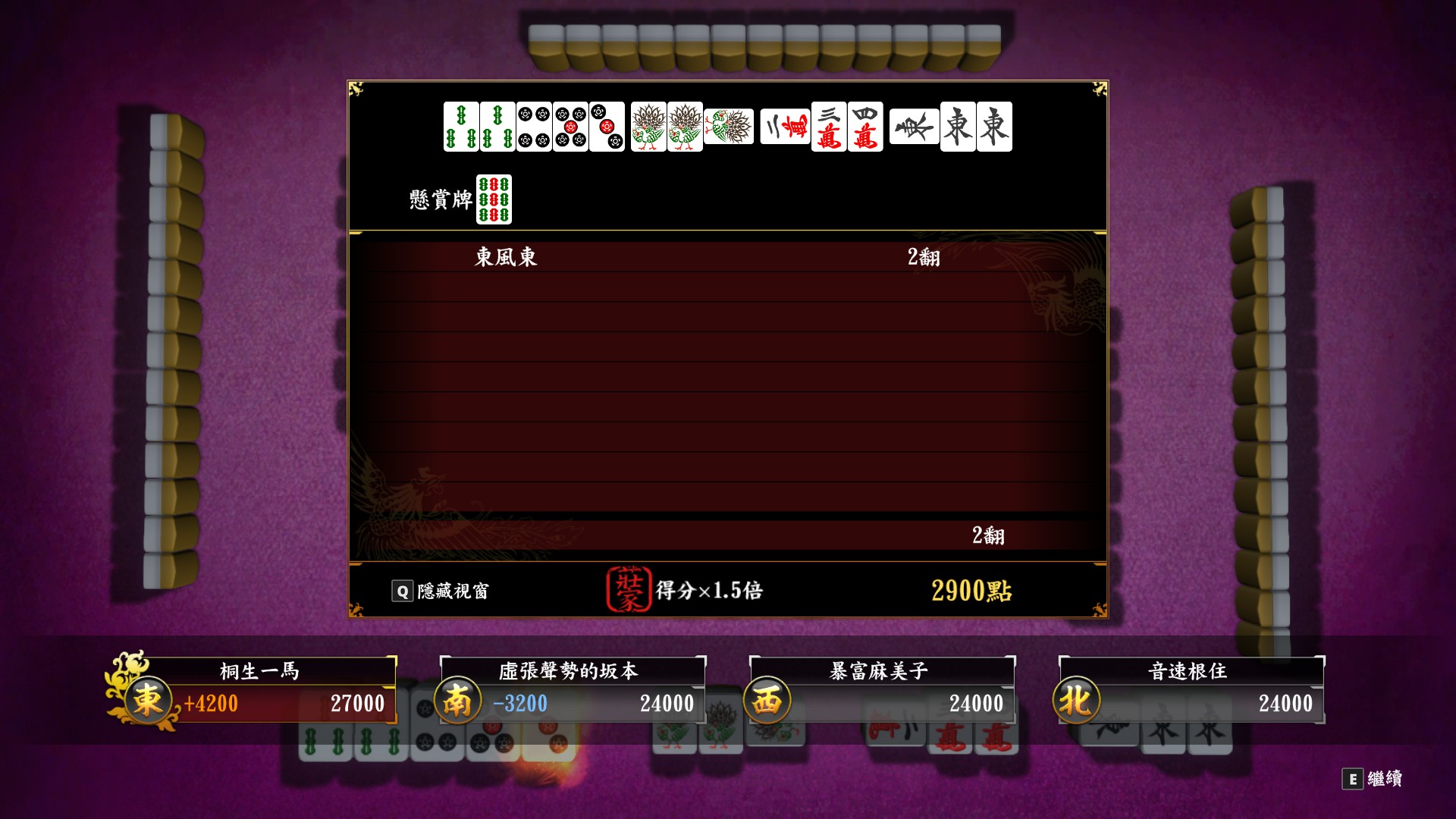
For example, as you can see in the top of the picture, this is a successful Ron. I formed a 33-345-111-234-3x east wind. The Honor here is made with the wind, otherwise even if I have another set I still cant Ron.
Prevailing Wind (場風)and Seat Wind (門風)
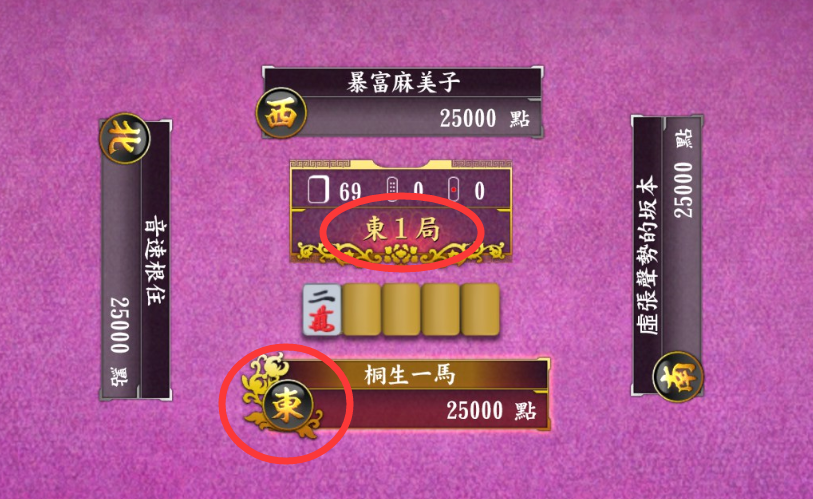
When you start the game, look into the middle of the table and you will see the information about this round and your own status.
The wind in the upper red circle is called Prevailing Wind, which is the wind of the current round. It will be the same wind for a few rounds, but it might change if you choose to play more than a whole game, so pay attention to it.
The wind in the lower red circle is called Seat Wind, which is the wind of your current location. It will change every round.
To form a Honor, the easiest way is to get a set of either the Prevailing Wind or Seat Wind.
Dragon (三元)
Nothing much to say, having a set of any color of Dragon Tile and you have a Honor
All Simple (断幺九)
Since sets of wind and dragon are actually not that easy to form in the game, there is also a way to win with only number tiles, which is All Simple.
The original Japanese 断幺九 means “no 1 or 9”, which is what you need to form this type of 役: toss any 1 or 9 of number tiles while forming your sets and pairs. Wind and dragon tiles are not allowed as well.
Here is an example of All Simple:

Riichi (立直)
This is the easiest but also the hardest way to make a Honor. To do so you simply need to form a 4 sets and 1 pair with any kind of tiles you want.
However, you MUST NOT perform any action to take others discarded tile with Chow(吃) / Pong(碰) / Kan(杠). You must collect all the tile by drawing them yourself.
There is only 1 exception that you can Kan on yourself, that is when getting the fourth tile of a kind all by self drawing, press Q to call out the action menu and press E to perform a self Kan.
After you are 1 tile from Ron, now you can press Q to call out the action menu, and as you inspect the tiles there will be a small window showing if you toss this one which tile or tiles you need to Ron.
The number on it or them refers to how many tiles of the type is left out there, you can choose base on which tile is more likely to be acquired by you.
Press E to toss the tile you don’t want and to perform a Riichi. It will cost you 1000 point, but unless you let others Ron, even if you didn’t Ron when the round ends, you can still win points that a little more than 1000.
After you performed a Riichi, you will automatically discard any tiles aside from the tile you choose to Ron. Now you only need to wait the tile you need to show up, and when it does press E to Ron or Tsumo.
However, since you will be automatically discarding tiles now, you will also have a higher chance to let others Ron, so you may want to put that into consideration after getting used to the game.
Ron or Draw
After Ron the game you will see an evaluation menu like this:
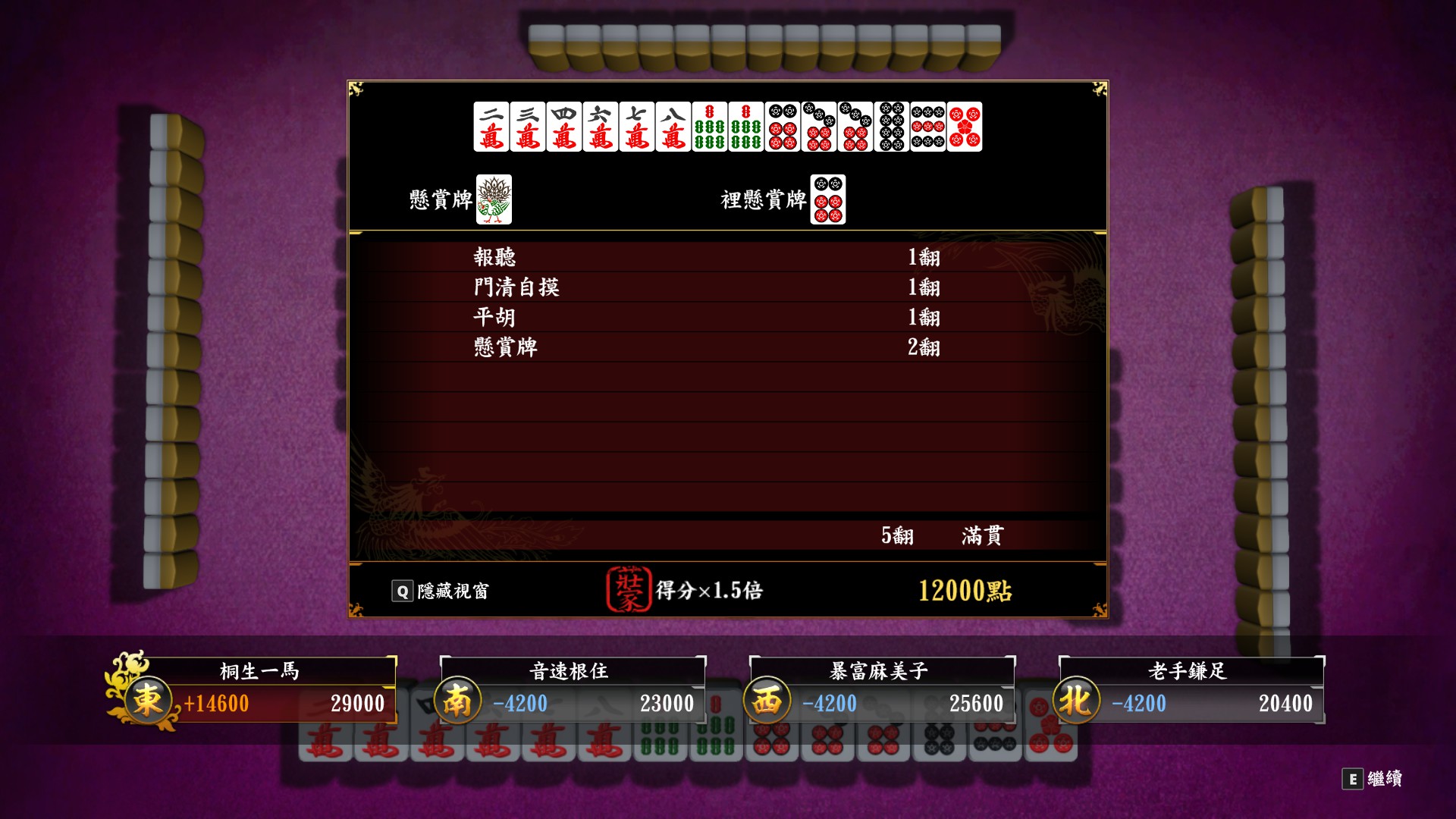
These are the Scoring (番) you made during the game. The more Scoring you have the points you get. Scoring can be get by Ron in specific formation or with specific types of tiles. You can look into it yourself if you want to master Mahjong after learning the basics.
If you Ron, you will get the points from who give you the Ron. If you Tsumo, you will get points from all three other players. Vice versa.
By the end of a whole round, you will win if you are on number 1 or 2 of the score board, as shown in this picture:
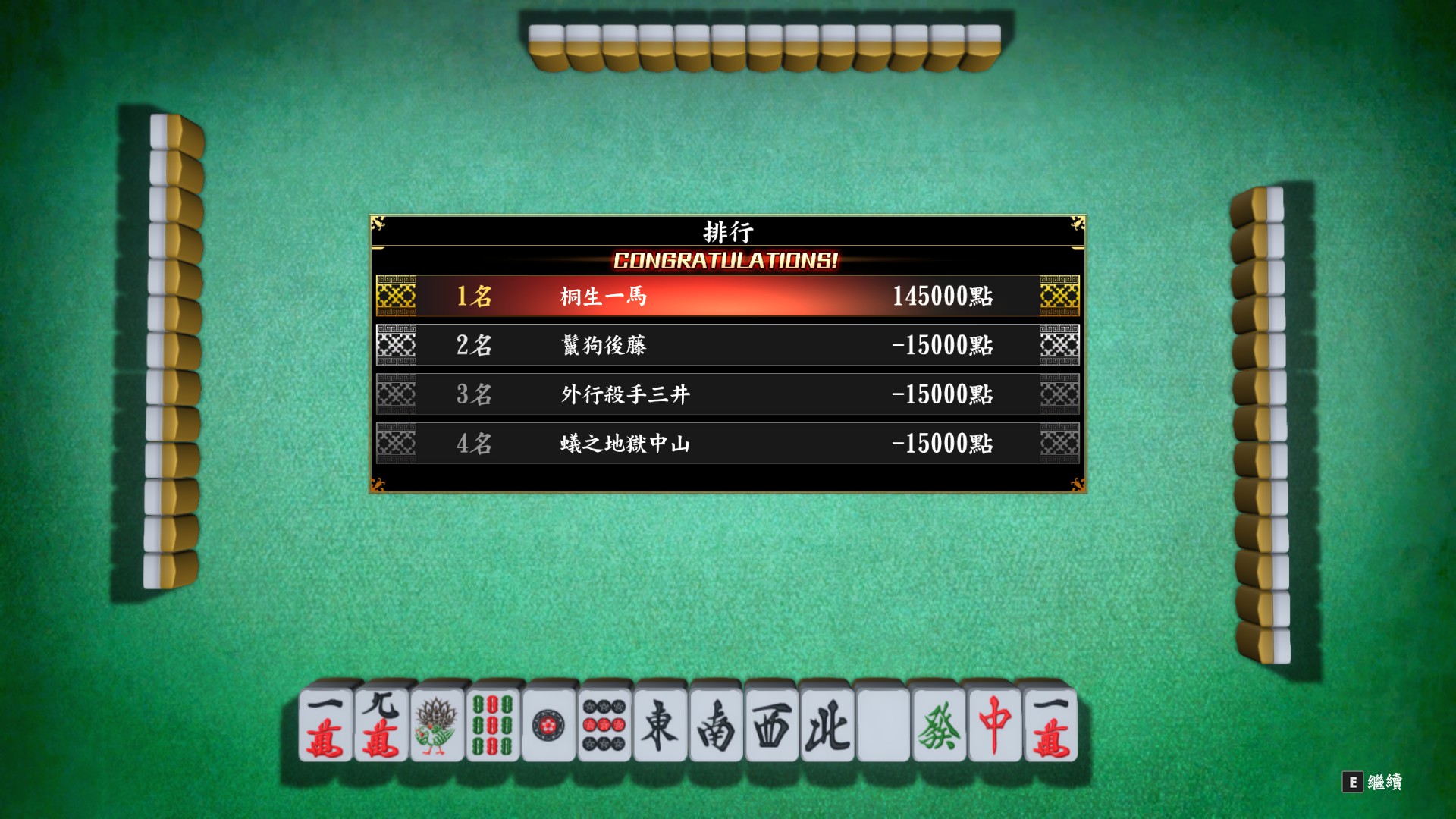
Winning the game give you extra points, which will be exchange to money if you are playing at regular table.
If nobody Ron after a round is over, it is a Draw (流局). If you are already 1 tile from Ron, you can still win a little points from who doesn’t, and vice versa.
Actions during the game
Aside from Ron the game, you can also perform three different actions during the game to take others’ tiles. The action menu will show up when you can perform one, press E to perform or Esc to decline.
It depends on your need so don’t just take action every time you had the chance. For example, when you don’t have any wind or dragon, and you are trying to perform an all simple, Chow a 9 tile will be a mistake as you won’t be able to toss it as it is taken by action.
Once a player performs an action, it automatically became his or her turn to draw and toss tile.
- Chow (吃): This action means “eating” the tile into a consecutive three tiles set. For example, when you have a bamboo 3 and 4, another player tosses a bamboo 5, and you can Chow it to form a bamboo 345.
- Pong (碰): This action means “bump” the tile into a same three tiles set. It might be Pon in your version but I am sure you can still recognize it. For example, when you have a character 2 and 2, another player tosses a character 2, and you can Pong it to form a 3x character 2
- Kan (杠): I don’t know how to translate this action, but it means taking the fourth tile of a same kind and form a set. For Example, when you already have a set of circle 4, another player tosses the fourth circle 4, you can Kan it to form a 4x circle 4.
As mentioned previously you can also Kan yourself if you draw the fourth tile yourself. Do be aware that after Chow and Pong you need to toss a tile you don’t want.
Settings Customization
Before you start the Mahjong game, at the menu you will see an option to change the rules. I have no idea what English version will be like but the option order should be the same.
Change the the settings into the status shown in the picture.
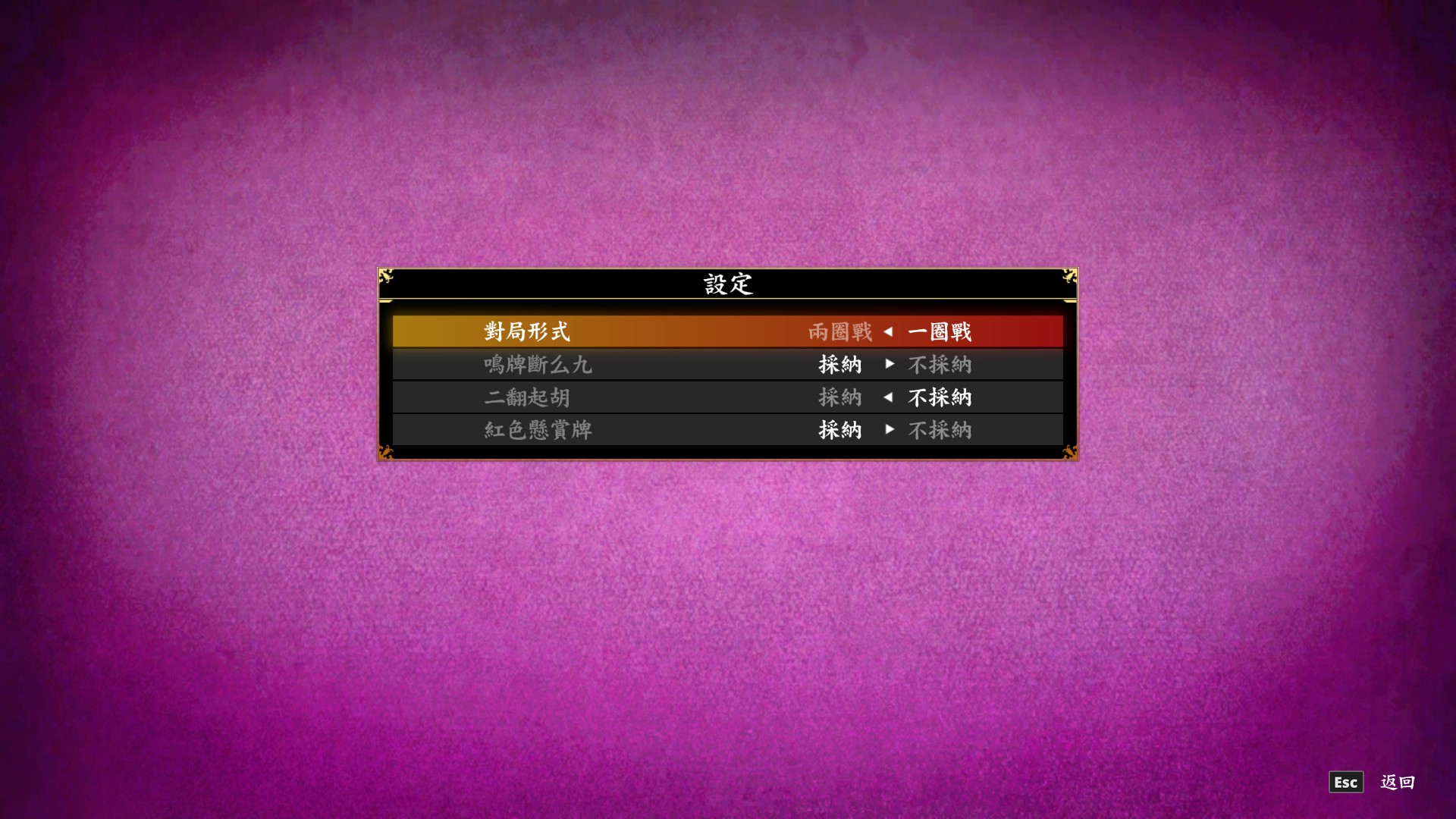
The first line means you only play one whole round of the game, so the game ends earlier and you are less likely to loss the points you win in the previous rounds.
The second line means if you can still play All Simple after Chow / Pong / Kan. Turn it ON to make it easier for yourself.
The third line means set the minimum Honor requirement to 2. Turn it OFF to make it easier for yourself.
The fourth line means allow red colored tile (not the 中 tile). Turn it on so when you collect red colored number tile during the game, each of them will gives you an extra Scoring.
In-Game Achievement List
The Mahjong related achievements in Yakuza Kiwami 2 are much more easier than the ones in 0 and Kiwami 1.
You only need to:
- Win as rank 1 in all four tables in both Tokyo and Osaka, and the two Mahjong tournaments after you unlock them at the counter of Mahjong place.
- Tsumo 50 times. Maybe this one bugged cause I remember I get this with both Ron and Tsumo, check your achievement status after you win a few rounds.
- Earn 100,000 Yen by Mahjong. Just keep playing till you earn enough money.
Trust me, this is much easier since you only need to win, not to form specefic formation when winning or do a 1 shot Riichi (Ron after Riichi before its your turn again, without anyone Chow / Pong / Kan), although I have done it more than once…
There is one substory that requires you win as rank 1 of a game with only 1000 points in the beginning. I suggest using the cheating tool you find in game which will give you a super win like this:
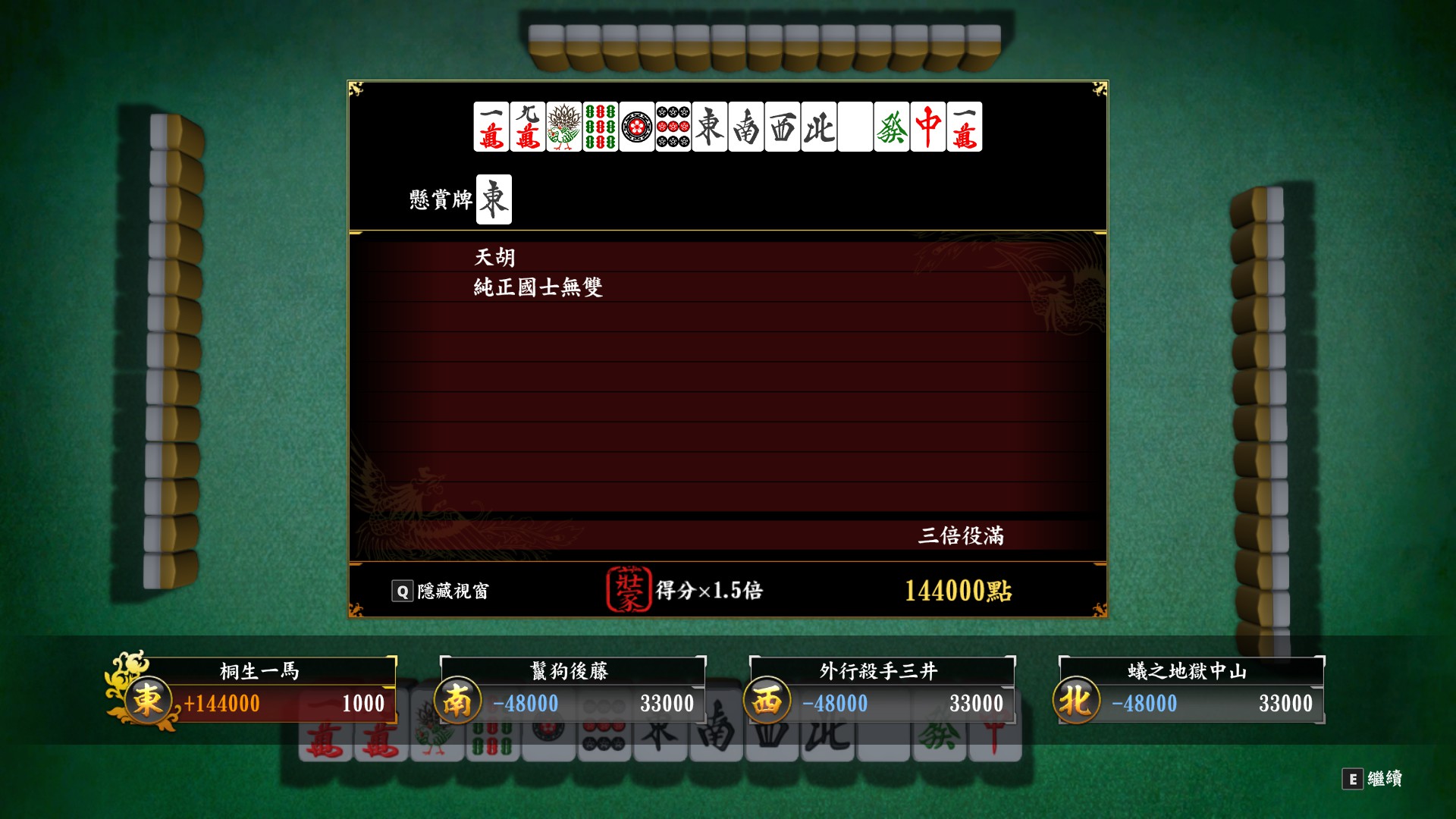

Or if you master Mahjong by yourself afterwards you can also challenge yourself with this one, good luck.
This is the first time I am writing a guide, hope it helps you to skip the suffering I have been through to get all achievement for Yakuza 0- Kiwami 2… And once again, Mahjong is a type of gambling, so you still need luck to win. Always SAVE before starting a round, and have fun.
